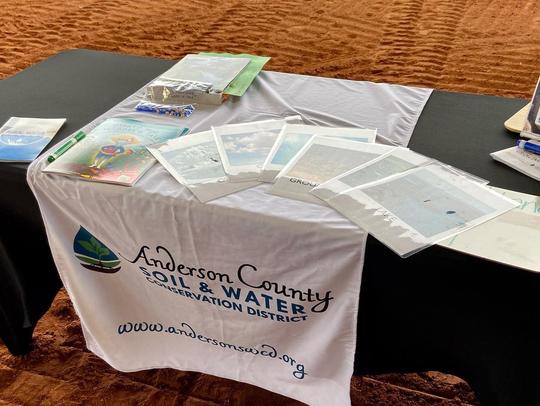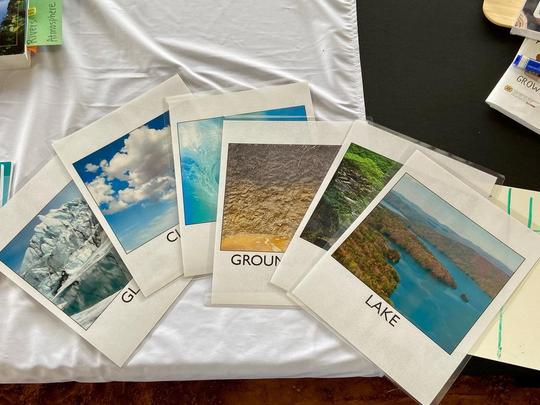

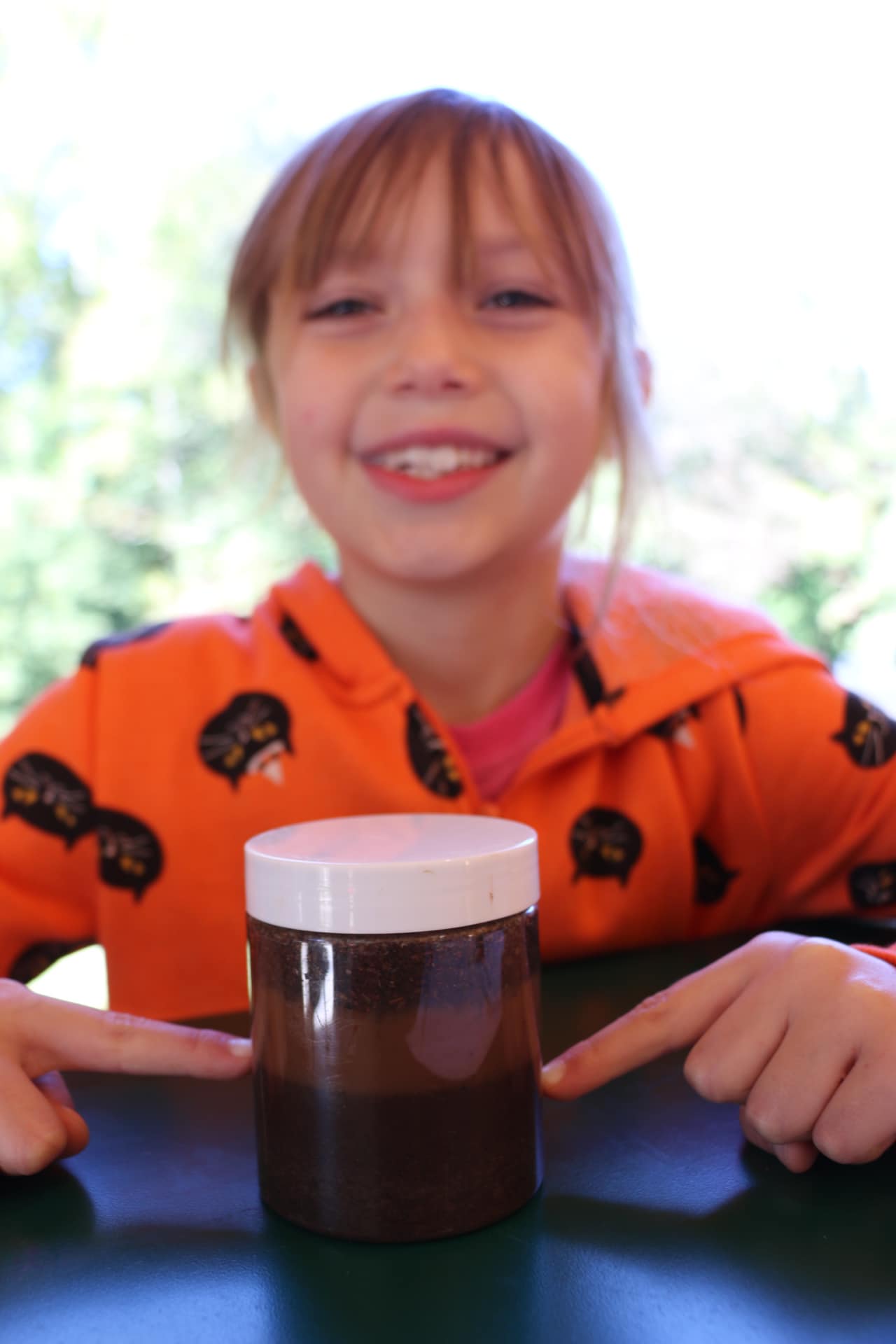


Anderson County Soil and Water Conservation District
Youth Education Programs
Education is a huge part of what we do here at ASWCD! These programs are designed to help students learn about environmental stewardship and how they can make a difference in their own county!
Schedule a Program
Our Education and Outreach Coordinator is available to present classroom conservation programs for schools and youth groups on a limited basis. All programs are correlated with SC Science Standards, Next Generation Science Standards, Common Core Standards and tailored to each grade level.
Guidelines
Programs are typically presented to one class at a time (max 25 students) with up to 3 presentation/classes at the same school in one day.
We love being outside! If you have an outdoor classroom, it is preferred over indoors - but this is not a requirement.
Most of our programs are 30-60 minute presentations depending on the topic.
Programs are available on first-come, first-serve basis, and our educator's calendars fill up quickly. Please contact us ASAP if you are interested in a program at your school.
These programs are FREE with no cost to the school or youth group.
If you have an special event (STEM Day, Farm Day, Career Day, etc.), we would love to join and can modify presentation length and number of presentations to fit within your schedule.
Available Programs
K-12th Grade
All programs are aligned to the Common Core Standards and Next Generation Science Standards.
Please email our Education and Outreach Coordinator, Ann Marie Pauley, to schedule a class program or to get more details on each program.
Click Here to see descriptions of each program
Water-Related Programs Blue Planet (Project WET) Earth's Water: A Drop in Your Cup (adapted from Project WET) The Incredible Journey (Project WET) The Life Box (Project WET) Macro Dress-Up Sum of the Parts (Project WET) Stream Health: In Introduction to Adopt-A-Stream
Soil- Related Programs What is Soil? Going, Going, Gone
Wildlife-Related Programs Adaptation Artistry (Project WILD) Color Crazy (Project WILD) Quick-Frozen Critters (Project WILD) Thicket Game (Project WILD) Web of Life (adapted from Project Learning Tree)
Forestry/Plants Related Programs Friends of the Forest Making Paper (SCFC) Tree ID (Project Learning Tree) Trees & Tree Cookies (adapted from Project Learning Tree)
Careers in Agriculture and Soil/Water Conservation
Enviroscape Table (point & nonpoint source pollution)
Click below to learn more about the curriculum we use!
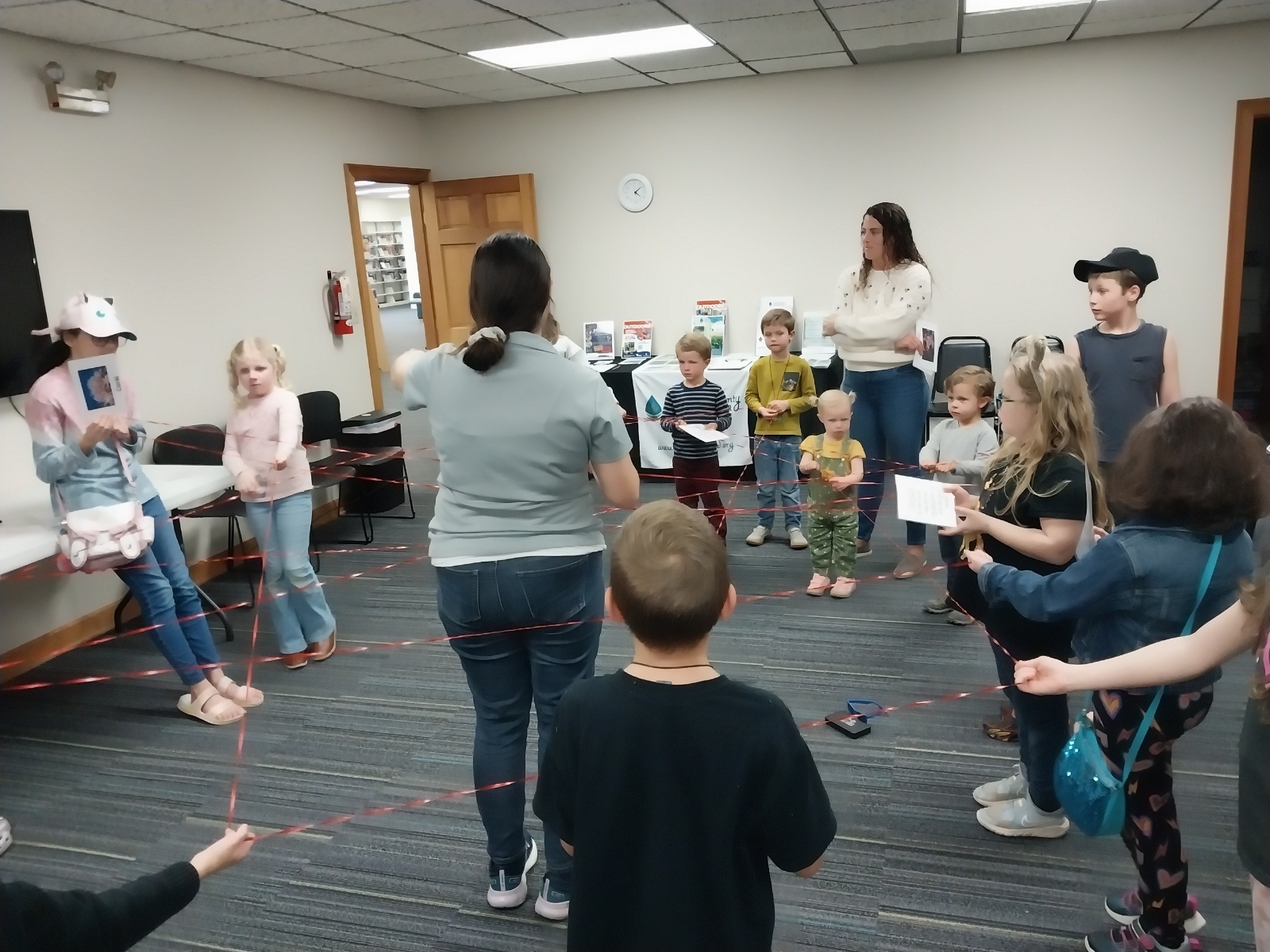
Web of Life (above) at the Lander Memorial Library (Williamston).

Macro Dress Up (above) with the ASD5's Multilingual Program Camp.

Earth's Water: A Drop in Your Cup (above) with Glenview Middle School.

PROJECT WET
The total amount of water on Earth cannot be increased, but we can learn to protect, conserve and better manage the water resources available to us. Dive in with water activities and lessons!
Learn more here.

PROJECT WILD
The goal of Project WILD is to assist students of any age in developing awareness, knowledge, skills, and commitment to result in informed decisions, responsible behavior, and constructive actions concerning wildlife and the environment.
Learn more here.
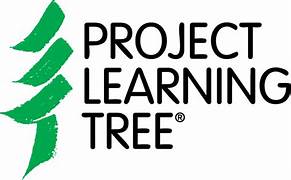
PROJECT LEARNING TREE
PLT advances environmental literacy and promotes stewardship through excellence in environmental education, professional development, and curriculum resources that use trees and forests as windows on the world.
Learn more here.
Join one of our Upcoming Programs
ASWCD has many upcoming programs and events! We partner with the Anderson Library System for several programs each year, and we participate in several community events like the West Pelzer Farm Fest or the Ag + Art Tour.


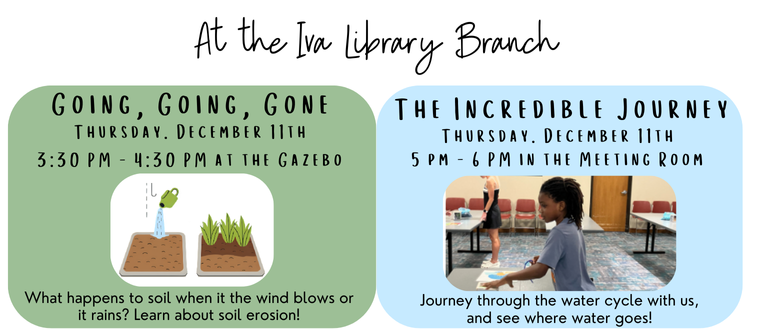

Check out Our
Water Trunks
Through the 2022 Kinder Morgan Citizen Empowerment Grant, ASWCD has been able to provide eight Water Trunks to the Anderson County Community. These Water Trunks have a variety of materials, lesson plans, and resources to help teach the importance of water quality. Please contact our office at annmarie.pauley@andersonswcd.org to check out a Water Trunk. If you are an Anderson County school teacher interested in housing a Water Trunk, please let us know.
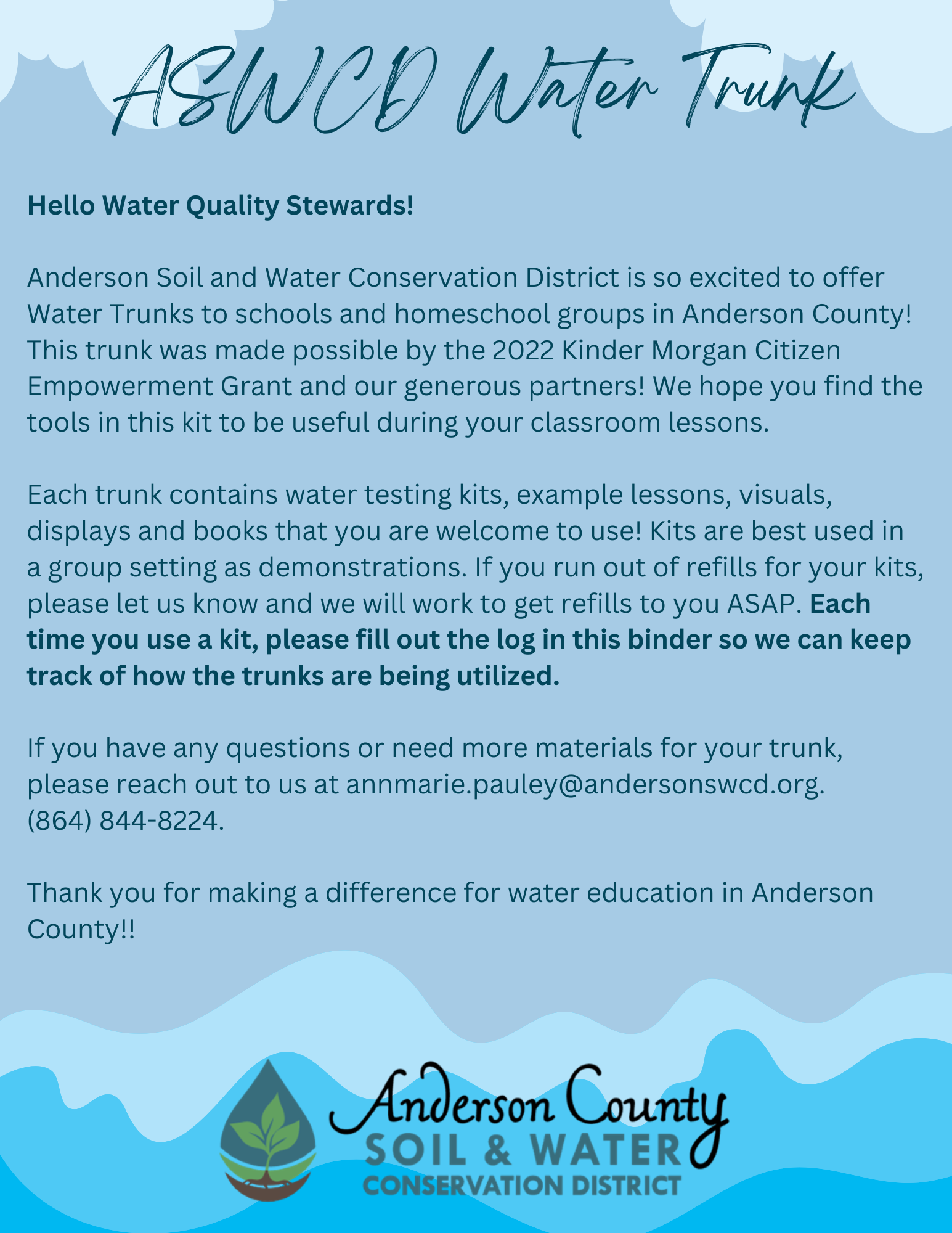
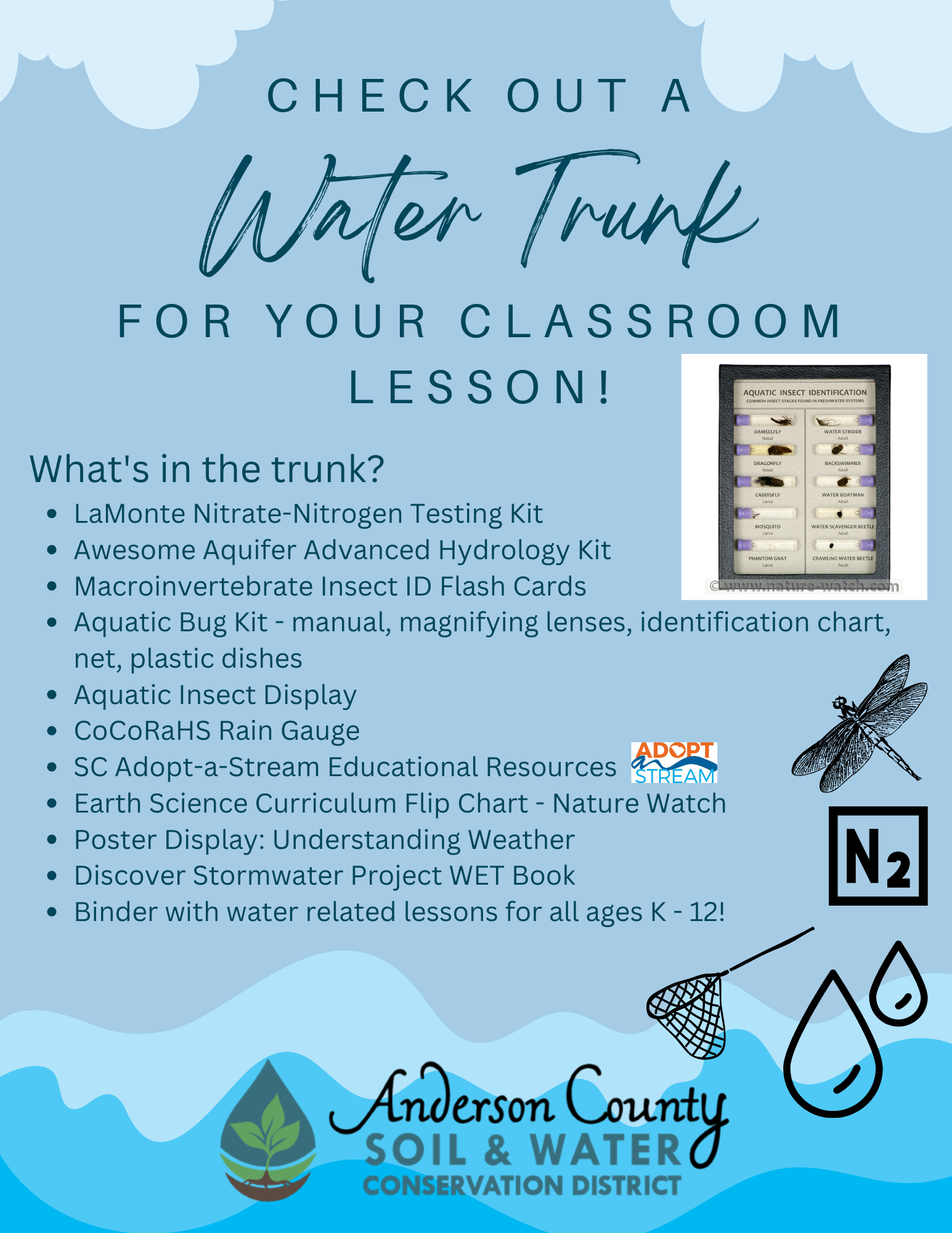
If you would like to view our Water Trunk lesson plans, please click the link below.
If you have suggestions for additional lesson plans or resources, please let us know!
Green Steps Schools
South Carolina’s Green Step Schools (SCGSS) is a program of the Environmental Education Association of SC (EEASC) available for free to any K-12 school in our state. Read more at https://eeasc.org/Green-Step-Schools. They are proud to be partially funded through PalmettoPride.
This program has won dozens of awards over the past 22 years, including the coveted SC Department of Natural Resources Governor’s Award for Environmental Awareness in 2020. GSS strives to empower teachers to introduce their students to easy, inexpensive, impactful environmental lessons tied to standards and paired with hands-on projects. They then strive to empower students to teach others outside their classroom about what they did and why it is important.
GSS pairs teachers with qualified mentors (primarily from SC agencies and non-profits) to plan, execute and evaluate projects. Schools earn awards by documenting sustaining projects with video links or pictures with captions of students learning, doing and teaching others on a Google Form that teachers, mentors and the GSS Coordinator all fill out together. Mentor organizations also earn awards.
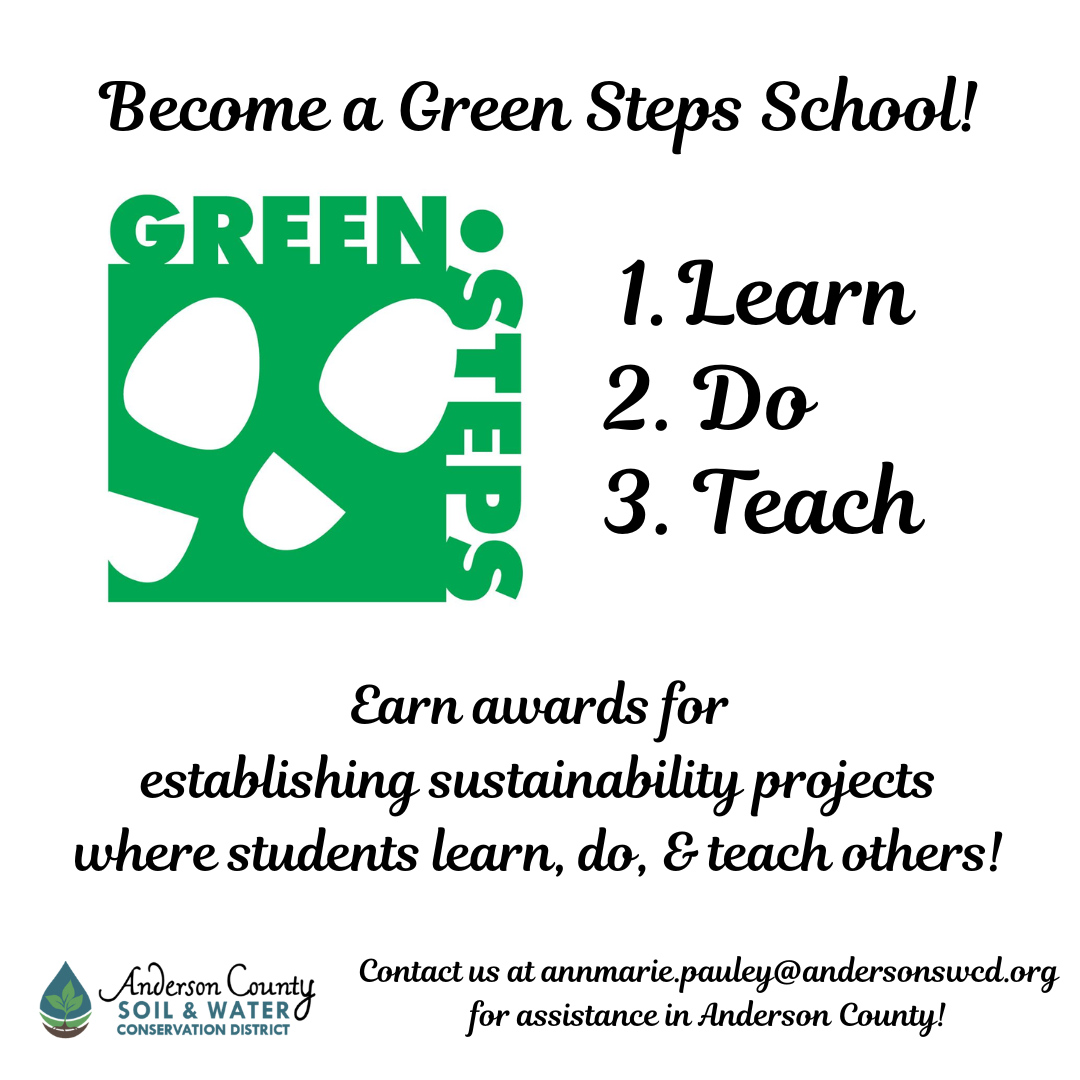
Contact the Following Anderson County Mentors for More Information or Assistance in Becoming a Green Steps School:
Mary Rhett Davidson (DavidsonMR@dnr.sc.gov)
SCDNR, Aquatic Education Programs
Trout in the Classroom (Protect: Water or Restore: Habitat)
Steven O'Shields (oshiel3@g.clemson.edu)
Clemson Extension Water Resource Agent
Protect: Water
Ann Marie Pauley (annmarie.pauley@andersonswcd.org)
Anderson County Soil & Water Conservation
Protect, Conserve, Restore

